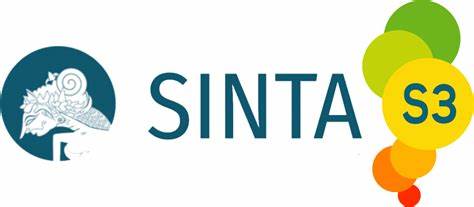LEXICAL RICHNESS IN INDONESIAN JUNIOR HIGH SCHOOL STUDENTS’ WRITING PRODUCTION: A CORPUS-BASED STUDY
DOI:
https://doi.org/10.22460/eltin.v11i1.p11-20Keywords:
lexical richness, senior high school students, descriptive textsAbstract
In the 2013 curriculum, English is not a compulsory subject in primary schools. Students may still have relatively very limited productive vocabulary and they might use certain communicative strategy when they did not know the vocabulary to express themselves. Therefore, this present study aims to examine the lexical richness of junior high school students’ writings on descriptive texts. The study focused on examining the lexical variation, lexical diversity, and lexical sophistication in the students’ writing production. The study was a corpus-based one. The corpus consists of 18 descriptive texts written by junior high school students in Yogyakarta and analyzed using lextutor, a web concordance English v.9 available on the internet. The results of the analysis reveal that descriptive texts have low, but very likely proper, average ratio on lexical variation, lexical density, and lexical sophistication considering their English proficiency level. It should be noted that the students were those of grade 7.
References
Astridya, F. W. (2018). Lexical richness of the expository writing in Indonesian by senior high school students. Lingual, 10 (1), 23-29. DOI: https://doi.org/10.24843/LJLC.2018.v05.i01.p04.
Azadnia, M. (2021). A Corpus-based Analysis of Lexical Richness in EAP Texts Written by Iranian TEFL Students. Teaching English as a Second Language Quarterlya (Formerly Journal of Teaching Language Skills), 40(4), 61-90.
Azodi N., Karimi F., Vaezi R. (2014). Measuring the lexical richness of productive vocabulary in Iranian EFL university students’ writing performance. Theory and Practice in Language Studies, 4 (9), pp. 1837-1849. DOI: 10.4304/tpls.4.9.1837- 1849.
Failasofah & Alkhrishes, H. T. D. (2018). Measuring Indonesian students’ lexical diversity and lexical sophistication. Indonesian Research Journal in Education, 2 (2), pp. 97- 107.
Gregori-Signes, C., & Clavel-Arroitia, B. (2015). Analysing lexical density and lexical diversity in university students’ written discourse. Procedia-Social and Behavioral Sciences, 198, 546-556.
Ha, H., S. (2019). Lexical richness in EFL undergraduate students’ academic writing.
English Teaching, 74 (3), pp. 3-28. DOI: 10.15858/engtea.74.3.201909.3.
Juanggo, W. (2018). Investigating lexical diversity and lexical sophistication of productive vocabulary in the written discourse of Indonesian EFL learners. Indonesian Journal of Applied Linguistics, 8 (1), 38-48. DOI: 10.17509/ijal.v8i1.11462.
Laufer, B. and Nation P. (1995). Vocabulary size and use: Lexical richness in L2 written production. Applied Linguistics (16) 3, 307-322.
Malvern, D., Richards, B. (2012). The encyclopedia of applied linguistics. Measures of Lexical Richness. 1-5. DOI: 10.1002/9781405198431.wbeal0755.
Puspita, D. (2019). Corpus based study: Students’ lexical coverage through business plan report writing. Proceeding: The 2nd International Conference on English Language Teaching and Learning (2nd ICON-ELTL), 25-38.
Ramos, F. D. R. Incidental vocabulary learning in second language acquisition: A literature review. Profile (17) 1, pp. 157-166. DOI: http://dx.doi.org/10.15446/profile.v17n1.43957.
Read, J. (2010). Assessing vocabulary. Cambridge: Cambridge University Press.
Real, D.V.C., Cuizon, P.C., Necesito, R.D., Tuppal, C.P., Oducado, R.M.F., Lee, M.D., Javenes, K.J.C. (2020). Lexical richness of L2 production using Nation and Laufer’s lexical frequency profile. SDCA Asia-Pacific Multidisciplinary Research Journal, 2, pp. 32-37.
Permata, N. (2022). Lexical richness of short stories written by EFL students. EFL Education Journal, 9(1), 102-116.
Siskova, Z. (2019). Lexical richness in EFL students’ narratives. Language Studies Working Papers, 4, pp. 26-36.
Zhai, L. (2016). A study on Chinese EFL learners’ vocabulary usage in writing. Journal of Language Teaching and Research, (7) 4, 752-759. DOI: http://dx.doi.org/10.17507/jltr.0704.16.





